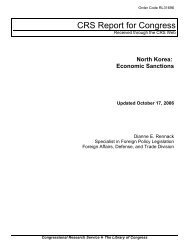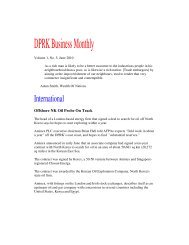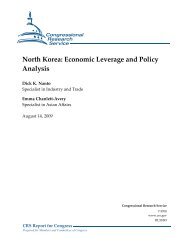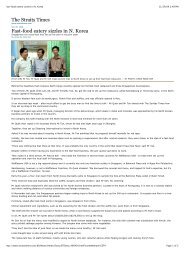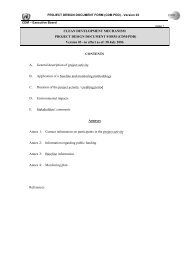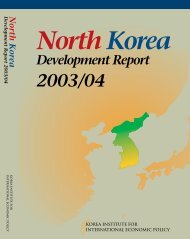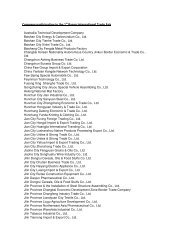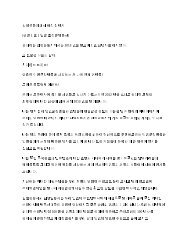North Korean Policy Elites - Defense Technical Information Center
North Korean Policy Elites - Defense Technical Information Center
North Korean Policy Elites - Defense Technical Information Center
Create successful ePaper yourself
Turn your PDF publications into a flip-book with our unique Google optimized e-Paper software.
document control bureaus in each ministry. This organizational structure suggests that even<br />
though Kim Il-sung was prime minister, his ability to exert control over the system was limited.<br />
Even the Ministry of Internal Affairs, which was under the leadership of Pak Ilu, was not<br />
immune from control of the shadow apparatus. In contrast to the tight reins maintained by the<br />
cabinet over most ministries, the Ministry of Internal Affairs was unique in its freedom from<br />
close cabinet supervision. The Soviet Union—through Soviet advisers, a relatively large number<br />
of Soviet <strong>Korean</strong>s, and probably representatives of the Soviet political police (MGB)<br />
establishment in <strong>North</strong> Korea—was, on the other hand, closely involved in this phase of<br />
government.<br />
Nowhere was the influence of the Soviet Union more evident than in the ministry’s<br />
political police, which had the maximum degree of freedom from external controls of the formal<br />
apparatus and the broadest authority to intervene throughout the apparatus. It even had a<br />
completely separate party organization independent of local party organs and responsible to the<br />
party only at Central Headquarters. The political police were contained within the ministry’s<br />
Political <strong>Defense</strong> Bureau, which was responsible for enforcement of loyalty to the <strong>North</strong> <strong>Korean</strong><br />
state. Pang Hak-se, a Soviet <strong>Korean</strong>, commanded the bureau. Soviet <strong>Korean</strong>s also held the<br />
deputy chief post (Nam Chang-yong), as well as the chiefs of four of the five offices<br />
(counterintelligence, investigation of political parties, surveillance of ministry personnel, and<br />
interrogation). By 1950, the bureau had attained the position of an elite corps in <strong>North</strong> Korea. Its<br />
power was evident in the awe with which both members of the bureaucracy and the general<br />
public held it.<br />
Kim Chong-il’s Rise to Power and Leadership Style<br />
This system was destroyed in the 1950s with Kim Il-sung’s purge of the Soviet faction.<br />
But, it laid the blueprint for Kim Chong-il’s power-building strategy twenty years later.<br />
Kim Il-sung used the revision of the constitution in 1972 to establish a formal ruling<br />
structure in <strong>North</strong> Korea. In addition to the creation of an office of the president, the new central<br />
government, unlike the old one under the 1948 constitution, separated policy-making functions<br />
performed by the newly created Central People’s Committee (CPC) from the policy-execution<br />
functions to be carried out by the Administration Council. 6 While ultimate decision-making<br />
authority remained in the KWP’s Politburo, the state was made much more active and Kim Ilsung<br />
began to shift his ruling apparatus to the presidential administration.<br />
6 The CPC was created specifically to control and supervise the state bureaucracy, whose performance and<br />
efficiency were of concern to Kim Il-sung in the 1960s.<br />
II-5



